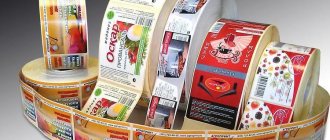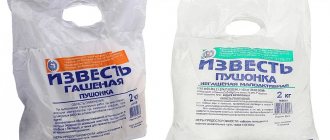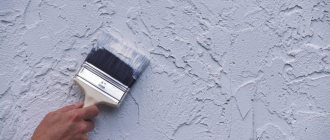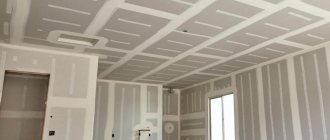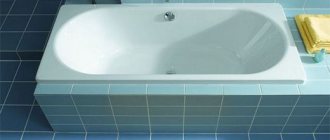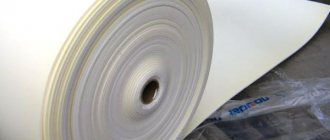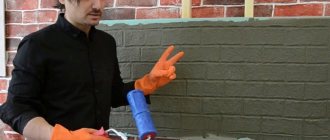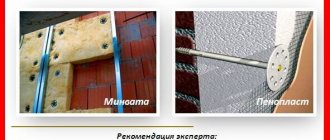The main advantage of a roller over a paint brush is that it provides the opportunity to cover a significantly larger surface area for treatment. This tool is much more profitable for painting walls and ceilings, as well as processing wide panels and applying paint to various products.
There are times when it is inferior to brushes in performing some work, for example, in painting hard-to-reach places, corners, construction lines, but basically it is the roller that can significantly reduce the time of painting work.
Based on the desire to get as much pleasure from work as possible, and not turn it into a long painful process, people strive to purchase convenient, high-quality tools.
This also applies to rollers. You always want to know in advance which roller is better. Their quality largely determines the ease of work. In this regard, you need to take a close look at the main elements of the tool: the coat, the cylinder.
Foam roller
The cheapest option is to sew a fur coat from foam rubber. It is excellent for priming surfaces with water-based paints. But this type of coat is not suitable for water-based emulsion.
The main advantage of a foam roller is its low price. At the same time, it is not recommended to use it for painting walls and ceilings, since when rolled it forms splashes and streaks. But it’s a nice job to paint the carpentry with them.
This roller will paint a wooden window in just five minutes. The main thing is to first seal the perimeter of the glass adjacent to the glazing beads with masking tape.
What to look for when buying a paint roller?
When choosing a tool for painting work, you should proceed from the tasks that need to be solved with its help. It must be remembered that even between products made of the same material there are differences due to their quality.
- As a rule, tool manufacturers make rollers of various colors, which indicate the quality of the material. For example, foam coats can be colored blue, yellow or white, which corresponds to the density of the foam in descending order. Similar colors are used for instruments made from other materials.
Without solid painting experience, you should not choose a large paint roller. This will create inconvenience when using it, which will significantly reduce labor efficiency.
- It is advisable to purchase several rollers that can be installed on one machine. Thus, it becomes possible to apply various paints or paints of different colors to the surface. The fur coat should not have a clearly visible seam or protruding thread ends, as this indicates the low quality of the instrument. A poor-quality seam can lead to paint smudging during application.
- To be able to reuse the roller for several days, it must be placed in a plastic or plastic bag and then tied tightly.
- To increase the efficiency of using this tool, it is worth purchasing a cuvette - a special trough for painting work.
USEFUL INFORMATION: Which putty is better for drywall: which one to choose?
Fur coat
Fur as the main covering of the tool is convenient for working with any composition. With water-based and oil-based ones. The fur surface absorbs paint perfectly, does not create bubbles on the working surface and evenly applies and rolls out the composition. This tool is good for masking places where cracks, chips, and small depressions appear.
Among the disadvantages of a fur roller for painting is the possibility of partial loss of lint during painting. It is worth carefully selecting fur coats of this type. If you save money and buy a cheaper option, you will need to be prepared to clean off numerous fluff from the treated surface.
Matching paint type
Different paint roller surface materials suit different types of paint. Usually the manufacturer indicates on the packaging which type is preferable to use.
If there are no instructions regarding the type of working surface, then you need to select a nozzle based on the following rules:
- For primers and antiseptics, which are all essentially neutral compounds, any cheap attachments made of polyester or foam rubber are suitable.
- For textured paints, it is recommended to choose exclusively polyamide or cotton nozzles.
- For acrylic, alkyd or oil paints, velor or fur paints are intended.
- Thick polyamide coloring compositions are applied with polyamide nozzles.
- For thick varnishes and paints, you should buy tools made from chemically resistant materials.
If the goal is to create a relief coating, then you should buy a special relief paint roller for this. Such products have a repeating pattern on their surface. The degree of convexity of the relief on the surface can also be different. You need to choose it depending on the consistency (viscosity, thickness) of the material used for textured painting of walls or ceilings.
Roller with velor coat
In terms of its properties and quality of surface coloring, velor is on par with the fur covering of the instrument. To some extent, he even surpasses him. Painting with a velor coat makes the surface smooth after drying. This coat is perfect for patching wooden surfaces (parquet, floorboards).
At the same time, it is recommended that experienced painters use the tool, since the velor coating has some features that give the work a certain subtlety that only knowledgeable craftsmen can handle.
Types of rollers by size
Its purpose will largely depend on the dimensions of the roller. For example, when painting walls, it is better to choose a tool with a wide working part, and rollers for corners should be short. The following roller sizes are available:
- Mini rollers. The width of the working part is no more than 150 mm, and the diameter is 15 cm. They are used for working on surfaces with complex terrain.
- Midi rollers. The working surface parameters vary from 150 to 250 mm. Diameter from 50 to 90 mm. Such models are considered universal, as they are suitable for painting all kinds of surfaces.
- Facade rollers. The width of their working surface exceeds 250 mm with a diameter of 80 mm. This instrument is classified as professional. It is used for uneven surfaces of an impressive area. Working with such rollers requires special skills.
ontent/uploads/2017/05/6ab3b-c8cd-11e4-afe5-00259036a192-42×48.jpg 42w" data-sizes="(max-width: 600px) 100vw, 600px" />
You should choose paint rollers by size based on your own experience and skills, as well as the type of surface that needs to be painted. In most cases, a midi roller is considered optimal.
Due to their large size, façade rollers are capable of absorbing an impressive amount of paint. Therefore, working with these types of products is difficult and tiring.
How to understand tool sizes
Rollers have their own division by size. To have a visual representation of this topic, you can view photos of paint rollers. You will find that having different parameters makes the workflow much easier. Comfortable conditions for working with the tool are created.
First of all, the dimensions of the main part – the cylinder – are taken into account. The handle parameters are of lesser importance. This characteristic breaks down instruments into the following types:
- Type – mini. The cylinder has a diameter of no more than 9 cm and a height of about 15 cm. The product is suitable for painting surfaces in hard-to-reach places.
- Type - midi. The diameter is the same, but the height is increased to 20 cm. The tool is universal and is recommended for finishing walls, ceilings and other wide surfaces. An additional advantage is the low weight of the roller.
- Maxi type The length of the roller reaches 30 cm, and the diameter is 8 cm. This roller is a professional tool. Accordingly, its price will be significantly higher than previous types.
This tool can be used both on interior and exterior façade work.
Design features
Paint rollers have a fairly simple design. They consist of the following elements:
- The clasp is a bracket on which a roller with a fur coat is attached. It has a curved shape. A comfortable handle is installed at the end so that the tool fits comfortably in your hand.
- Lever. It is made of plastic, wood or rubberized material. Special depressions are made on it, repeating the shape of the fingers. This allows you not to be afraid that the roller will slip out of your hand.
- Video clip. It is a cylinder that rotates freely on a clasp. It is made of plastic or metal.
- Coat. Fits over the roller. It can be made of foam rubber, velor or faux fur with different pile lengths. This part of the roller is intended for applying paint.
Thanks to this design, the paint roller has advantages over other tools:
- productivity and speed of painting increases;
- it is permissible to use any type of paint;
- no hairs or other traces of the tool remain on the applied layer;
- paint is consumed less;
- There are no splashes or smudges during painting.
Only high-quality products have these advantages. Previously, in our country, rollers were produced according to GOST. Today, construction stores sell mainly imported goods.
